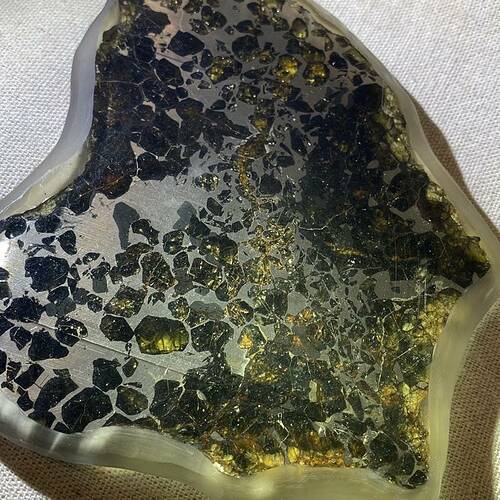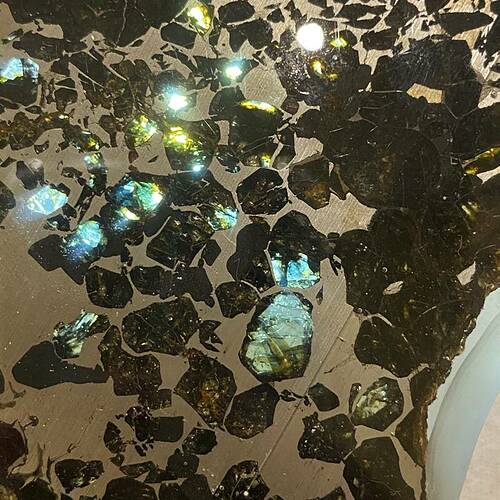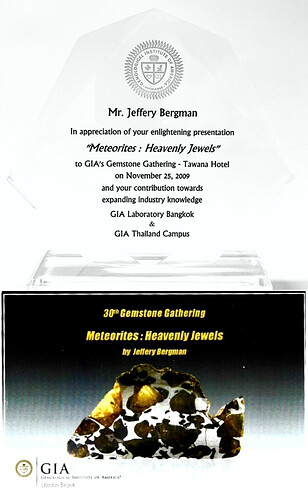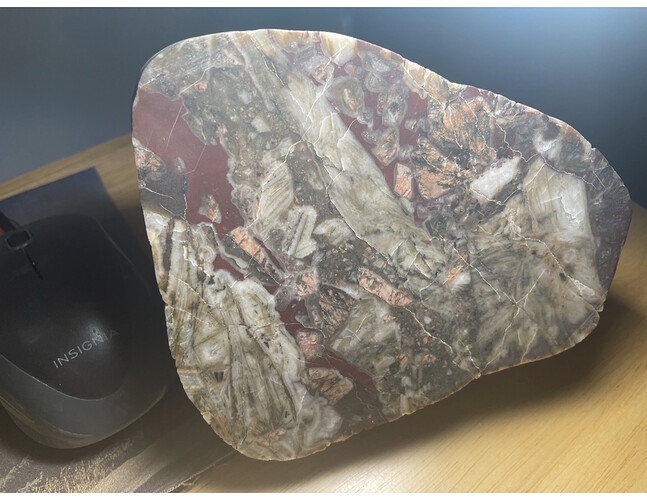Good Morning, Mr. Bergman; I very much enjoyed your presentation. Well done!
On the subject of meteorites, and given your expertise & experiences, I thought I would share a couple of specimens for your review & commentary.
The first one, as in “Delta T.,” is quite fascinating, as it’s matrix is light, grayish olivine (Jadeite) green with yellowish, purple and black inclusions. These inclusions resemble organic, and perhaps biological mineralizations. At first blush, I thought I was looking at an Arthropod, or some form of crustacean, similar to what’s been described in Columbian Trapiche Emeralds (What is a Trapiche Emerald? - International Gem Society), where marine basalts are liquified carbonaceous minerals (tectonic/metamorphic) and where they are then blended with Be & Cr. This proposal is still a possibility, I suppose, yet the answer may be a bit more complex when attempting to explain the presence of NiFe flecks throughout. This stone does, in fact, attract a Nb/rare-earth magnet with ease.
The specific gravity of this specimen is 2.802, which is in alignment with such minerals as Zektzerite, Sogdanite, Serandite, Precious Beryl, and, of course, Emerald.
The second specimen, as in Ryan’s Scone, is a polished end cut weighing in @ 2.801kgs and a specific gravity of 3.15. This pairs up with minerals such as Zoisite, Ludlamite, Moissanite, Clinohumite, and others.
What is also intriguing, is the combination of shatter cone features in the translucent greenish/white peridot spars, with impact fissuring in both the shatter cone features and the pink colored inclusions. There are also multiple large flecks of metallic minerals (likely Cr, or Ni), appearing to shroud a number of the light green crystal shards. These metals are also seen in the number fissures throughout the surface. This specimen does not attract a magnet, yet there appears to be a large percentage of Fe, or perhaps Pb, given it’s weight & density.
On the issue of Shatter Cones, here’s a very link to the Sudbury Ni Crater, and how ALL shatter cones are related to meteoritic impacts; - YouTube
Again, I do appreciate your interests, insights, and your dedications to the gem & mineral world, both here on Planet Earth & elsewhere. It’s all about sharing discoveries, and advancing our knowledge through excellent forums such as this.
My Best & Finest Regards, Sir!
Happy New Year to You, as well.





